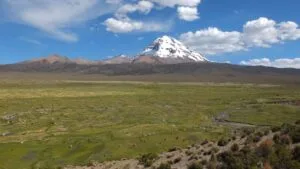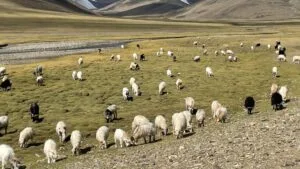Nadine Salzmann
Pellet, Cécile; Lhamo, Sonam; Gugerli, Rebecca; Eden, Pema; Naegeli, Kathrin; Gurung, DB
Abstract/Description
Precipitation and permafrost measurements are pivotal to comprehending critical processes ranging from the global (climate dynamics) to the local (hazards such as mass movements, ecosystems). However, the spatio-temporal coverage of such measurements is limited and frequently accompanied by substantial uncertainties. One high-altitude region with particularly few (precipitation) or no (permafrost) measurements is Bhutan in the eastern Himalayas. In the recently initiated CRYO-SPIRIT project (funded by the Swiss National Science Foundation), collaboration between Switzerland and Bhutan is being initiated to conduct permafrost research and high-elevation precipitation measurements by means of a cosmic ray sensor in Bhutan. The overarching project strategy is focused on three principal aspects: firstly, the collection and computation of permafrost and precipitation (SWE) data using in-situ and remote sensing technologies; secondly, the assessment and enhancement of awareness regarding (future) risks associated with permafrost thaw, including the formulation of adaptation strategies; and thirdly, the capacity building of local researchers to sustain permafrost-related monitoring, research and teaching in Bhutan. The assessment of permafrost is achieved through the compilation of the first regional map of potential permafrost distribution in Bhutan, utilising in-situ Ground Surface Temperature (GST) measurements and remote sensing-based mapping of permafrost characteristic landforms, with a particular emphasis on rock glaciers.The first CRYO-SPIRIT field campaign was conducted in the autumn of 2024 in the vicinity of Thana glacier (Chamkhar Chhu Basin, Bumthang). The installation of a CRS (Cosmic Ray Sensor) was undertaken to measure SWE.The selection of the research site was based on its proximity to one of the three benchmark glaciers visited annually by researchers from Bhutan’s National Center for Hydrology and Meteorology (ensuring the long-term continuation of the measurements), as well as the presence of an automatic weather station and identified periglacial landforms. During the field campaign, ground surface temperature loggers were installed at elevations ranging from 4300 m asl (below the lower limit of permafrost) to 5200 m asl, spanning an elevation gradient and different exposure levels.This contribution presents and discusses the results of the first field campaign, including the data (SWE/precipitation) and the subsequent steps.


